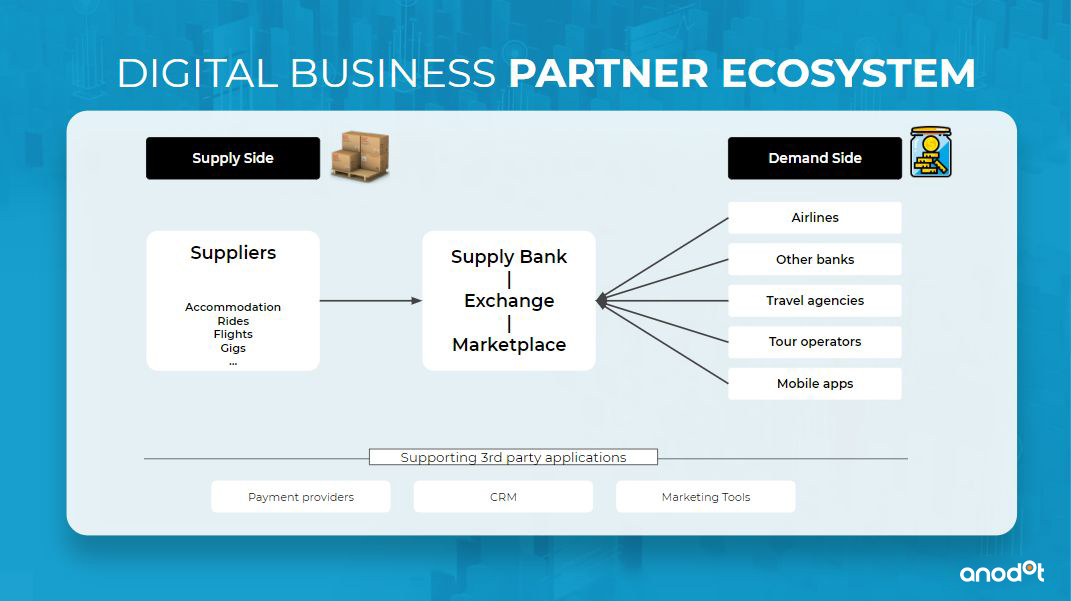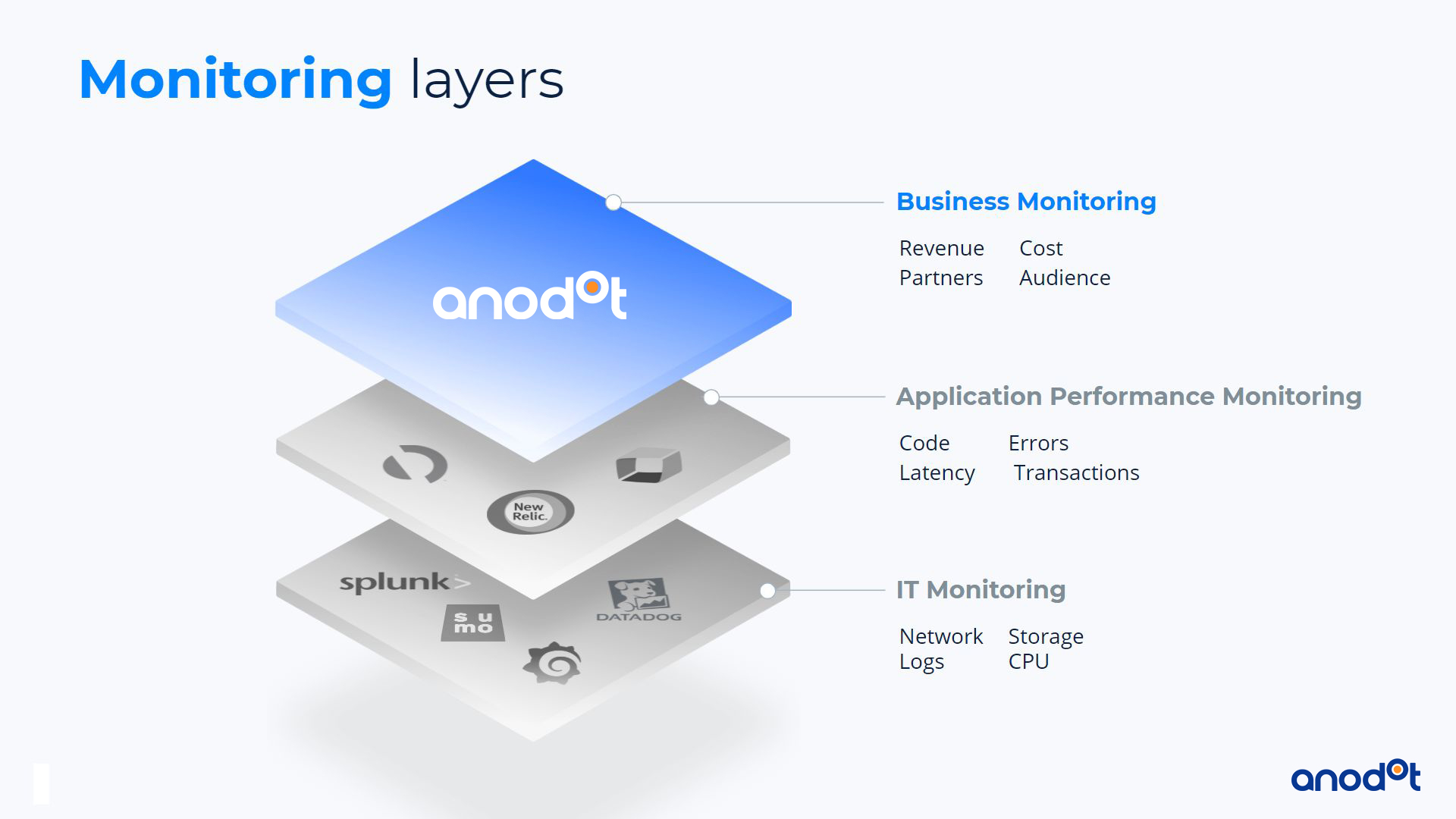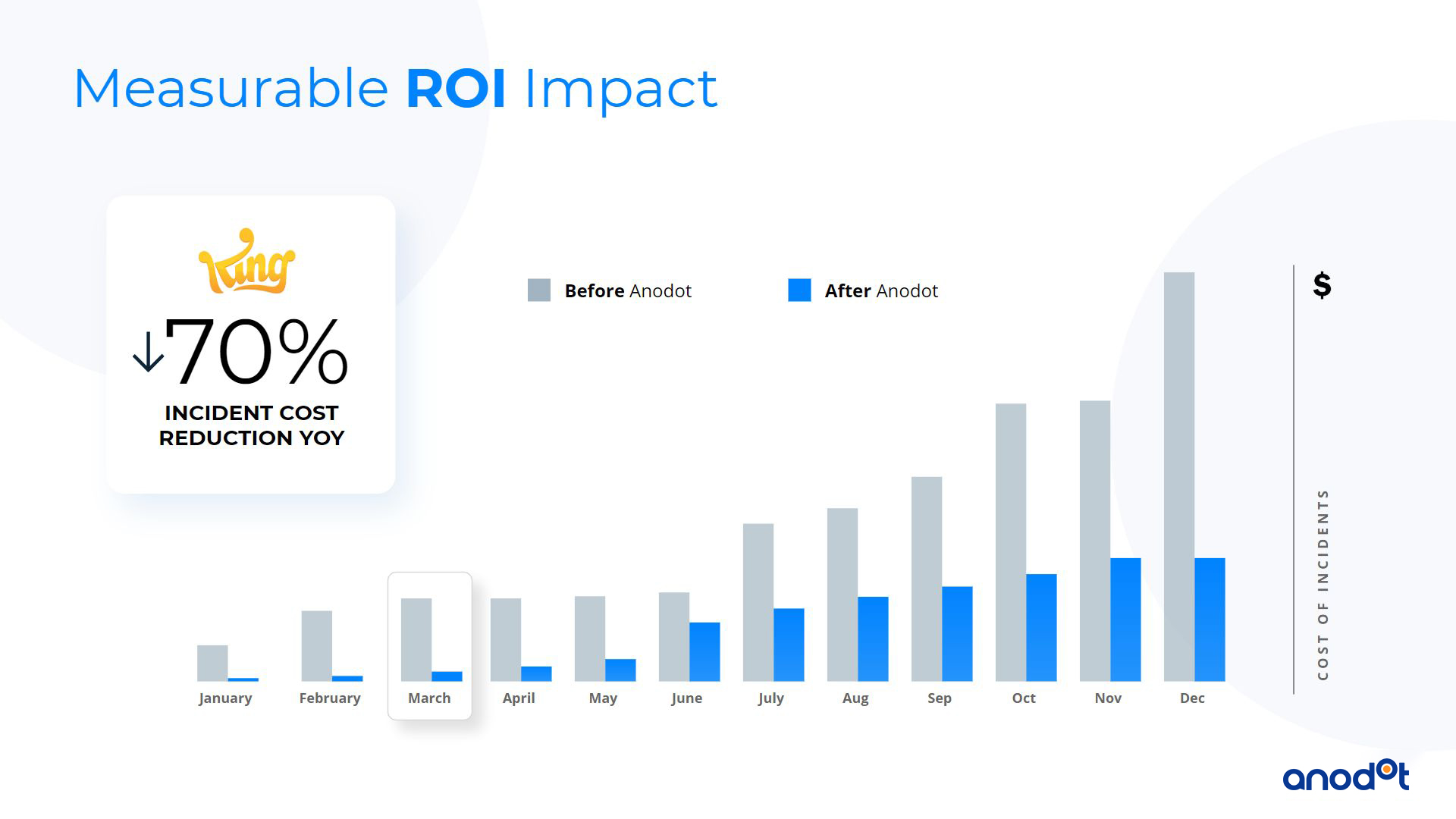Today’s business needs make it virtually impossible to function without relying on an extensive network of partners and third-party providers. An IBM study found that 70 percent of businesses were looking to increase their external partnerships. The company’s most recent C-Suite Study shows the majority of organizations are actively seeking to expand partner networks, and that 56 percent of “Torchbearer” companies (those most advanced in their digital transformations) are already actively sharing data with their partners.
While partnerships open new pathways to growth and productivity, they also introduce an additional layer of complexities. The APIs that link these services to your company are vulnerable to glitches and downtime, and need careful configuration to make sure they work together efficiently across your operation’s infrastructure.
As these networks expand, it’s becoming increasingly difficult to detect incidents, which can easily contribute to revenue loss.
Many companies try feeding these business metrics – referrals, impressions, or revenue – into APM or IT monitoring systems. Monitoring machines and monitoring business KPIs are completely different because of the metrics’ context, topology and their volatility.
Business metrics cannot be evaluated in absolute terms. They fluctuate in relation to a set of changing conditions heavily influenced by human behavior, which is often seasonal and affected by a large number of parameters. Also, as a monitoring framework, business topology is unknown. When we monitor machine data, we know the relationship between the different machines – but humans, at best, can keep track of a handful of business metrics. Machine learning algorithms, on the other hand, can learn and map billions of metrics.
Finally, the business sampling rate is irregular and requires significant adaptation in how data is stored and how the monitoring algorithm works.
This is where an ML-based business monitoring solution can help. Before we examine how, let’s look at some at the different partner networks and some use cases.
Types of Partner Networks
There are two main types of partner networks: programmatic advertising platforms and affiliate networks.
Programmatic Advertising
Programmatic advertising is an incredibly fast-moving ecosystem that connects advertisers with publishers for ad space. These businesses manage huge budgets for a long list of partners, and need to monitor each partner’s impressions, clicks and conversions at a rate that reaches into the billions daily. At that pace, an incident left unresolved can escalate into thousands of dollars in lost revenue in a matter of minutes.
It takes only a missing line of code or an improperly entered tag to throw off an ad campaign or product sales, potentially causing losses of millions of dollars in a nanosecond. A robust monitoring system is essential. It’s an area of business analytics that is ideally poised to take advantage of AI and machine learning.
With huge amounts of data being produced in real time, machine learning is the only viable way to extract meaning from this data on the fly so it can be immediately put to use. Adtech companies such as AppNexus, Rubicon Project, Uprise, NetSeer and PMC have all switched from traditional monitoring to AI analytics.
Read more case studies about how Anodot’s Autonomous Business Monitoring can help monitor programmatic advertising here.
Affiliate Networks
Affiliate networks are another complex area where thousands of fast-moving accounts have the potential to drastically affect final business outcomes. One large affiliate network company came to Anodot with a common set of challenges, including implementing a system to automate affiliate tracking so they could prevent revenue loss and churn.
Monitoring each affiliate was a complex task. Account managers need to track their traffic volume, conversion rates and return on ad spend – the lifeline of the business – in addition to keeping their suppliers happy.
Anodot provided real-time alerts on drops in referrals, which tipped their team off to at-risk accounts. Managers were able to focus more on customer support, rather than spending their time combing through dashboards looking for anomalies. They were finding out sooner if an affiliate started promoting a competitor’s product, or if they had an issue with their site and needed additional support.
You can read the full case study here.
Monitoring Your APIs: The Back-End of Partner Networks
From connecting suppliers to managing referral sites, business today relies on application program interfaces (APIs) to connect to partner companies. APIs are the crucial link to everything from entire SaaS solutions to individual software functions such as log-in gateways.
It’s standard for businesses to have millions, if not billions of API interactions happening each day.
Errors and glitches with APIs are common, especially where different companies’ APIs interact. What’s more, as your company grows and adds services, API issues grow with you and teams find it extremely impractical to monitor them with current tools.
How Teams Traditionally Monitor Partner Networks
Many analysts use BI dashboards and manually implemented alerting to monitor their partner networks. There are several big disadvantages to traditional monitoring on the technical side, specifically latency and the inability to scale. On the emotional side, partner relationships get damaged partner relationships and pin down an issue before a partner does and it’s important to demonstrate a proactive approach and not only react when partners complain.
Time to Resolution
The mean time to resolution (MTTR) for a problem or incident can have a huge impact on its eventual cost to your business. Traditional monitoring methods rely heavily on human analysts “eyeballing” trends and failures by inspecting logs. By definition, these logs will be hours or even days old, making it impossible to spot problems early. A good experience for your partner is when businesses take the initiative to find and resolve issues before they have a chance to complain
Manual Alert Instigation
The problems with setting alerts manually are twofold. First of all, each partner’s data behaves differently. The patterns presented by every partner are unique to that specific partner and have to be learned individually in order to monitor effectively. Also, most systems aren’t built to group or consolidate alerts. This is the leading cause of alert storms during major incidents, when one issue or problem triggers a cascade of alerts from different parts of the system, inundating human analysts as they work through the alerts to try and identify the root cause.
The other issue with manual alerts is of course that you need to know what merits an alert before you can implement it. This means an “unknown unknown” won’t always trigger the alert settings, and the incident will likely fester and cause greater harm to your business before it’s noticed.
Automated Monitoring with AI
Partner and affiliate tracking powered by AI has a number of big advantages over traditional methods.
First of which is speed. Machine learning algorithms can learn each metric individually and identify when it behaves abnormally, detecting even a slight deviation from the expected behavior. This enables real-time alerting when many other tools arrive hours or days late, and allows incidents to escalate.
The second is scale. With automated AI monitoring, you can be certain that no issue will go unnoticed, no matter the time of day. Every metric will be collected and assessed using adaptive learning, to give you a comprehensive overview of what’s going on. Your technical staff will no longer have to spend large amounts of time trying to manually extract issues and actions from huge data-sets, leaving them to concentrate on proactively working to improve your business.
And then there’s granularity. Monitoring with AI not only offers an instant overview of what’s happening over your entire partner ecosystem, it inspects even the most granular metrics. If there’s an incident, it can pinpoint the source, all the way down to the location, device and browser. A system that correlates incidents makes a big difference here. Grouping related anomalies and events into a single alert prevents alert storms, and makes it much easier to discover the root cause. This ability to monitor everything at once enables you to proactively optimize your systems, and find issues before they become problems.
Anodot’s completely autonomous monitoring solution uses machine learning to continuously track your partner network in real time, at scale. You’ll save time and money on monitoring, and at the same time get much better results across the board.
Want to learn more about how Anodot can help scale your monitoring and anomaly detection for partners and affiliates? Get in touch today and request a demo.







